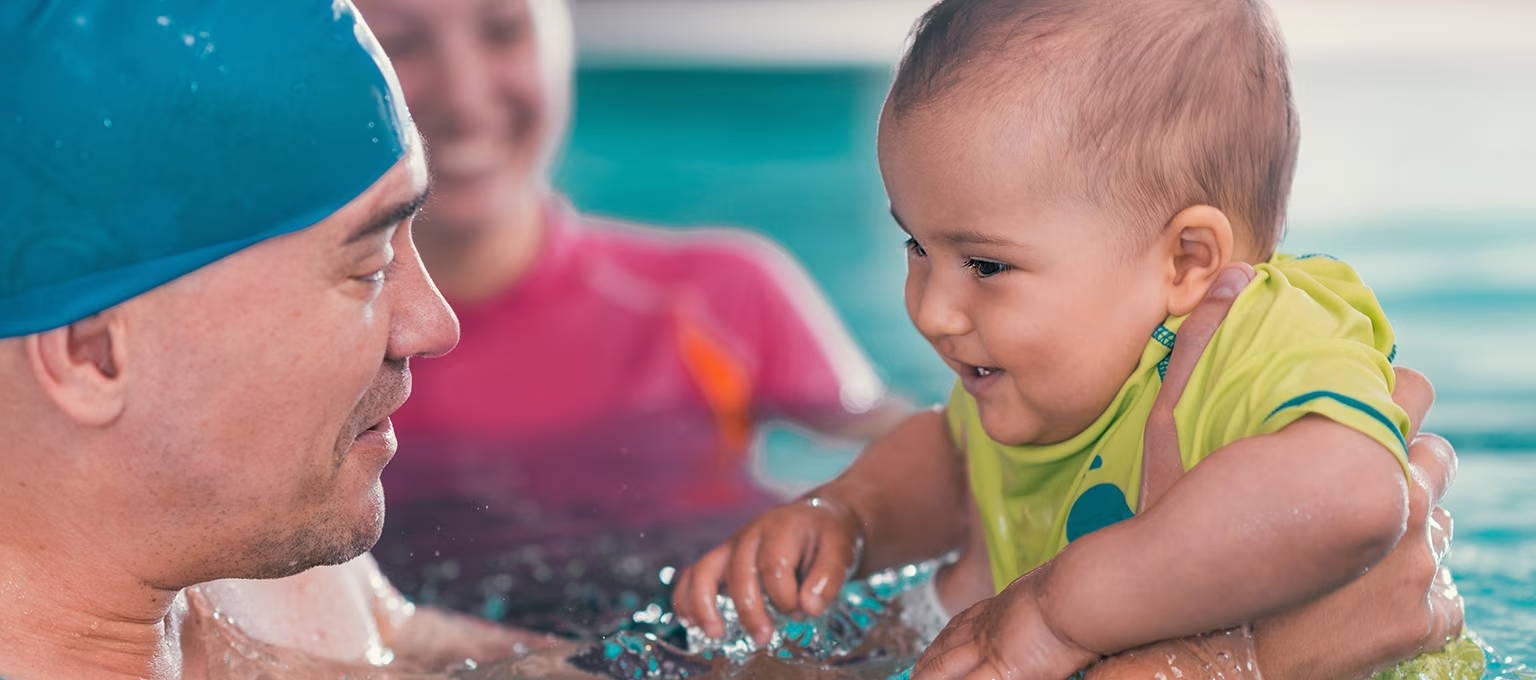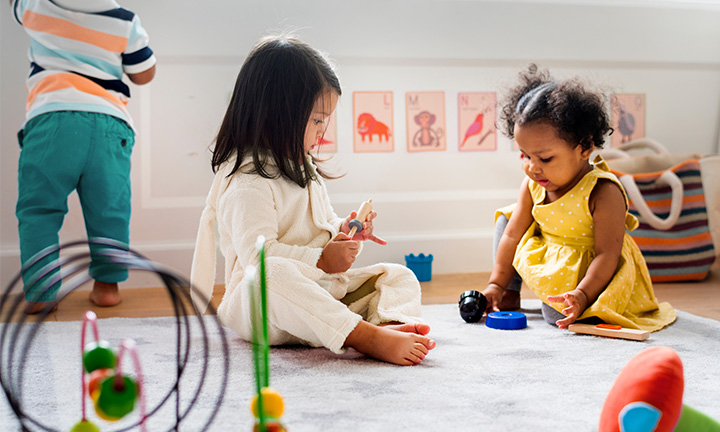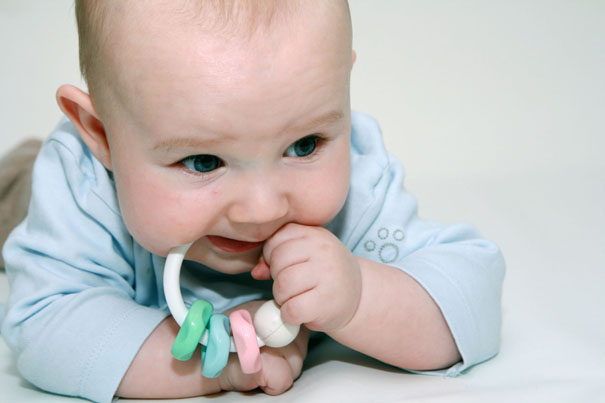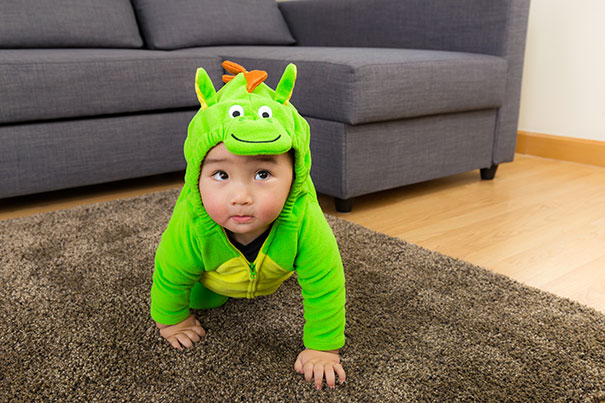
Baby Swimming: Benefits of Lessons and When to Get Started
Playing in the water, whether it's learning to swim or just splashing around, is lots of fun for babies and young kids. And knowing how to swim is an important skill that can help keep your child safe all through life. That's why getting started with swimming lessons once your child is old enough is a smart move. Even if your baby isn’t ready just yet, you might consider doing some water play to get them ready for swimming lessons down the road.
Find out when you can take your baby swimming and the signs of readiness to look for.
It's also good to be aware of water safety, which is super important at every age and stage. Read on for some essential water safety advice that you should follow whenever your baby, toddler, or preschooler is in or near water.
When Can You Take Your Baby Swimming?
Have you been wondering when can babies start swimming? Experts recommend that you can start taking your little one to parent-child swimming classes as early as age 1. Because every child is different, though, you may find your little one isn’t ready to start swimming lessons until a little later.
It’s important to know that newborns and infants younger than 12 months old aren’t yet able to raise their heads above the water to breathe, so swimming lessons aren’t appropriate for them just yet. So, when can babies swim? Starting at age 1, your baby may be ready for parent-child swimming classes.
In your baby’s first year, you might like to do parent-child water play classes with your baby to help them get used to being in water. This can
Some parents wonder when babies can go in a chlorine pool. Chlorinated pools are generally safe for babies over 6 months, but always check with your pediatrician first.
When deciding when to start your child on swimming lessons, take into account your child's
Your child's physical readiness is important. For example, crawling is a significant milestone that indicates motor skill development. Read more about when babies crawl to understand your child's development.
Most children are ready for regular swimming lessons by the age of 4 when they can grasp basic skills such as
While experts recommend starting at age 1, the best age to start swimming for babies depends on your child's individual development. If you’re ever unsure when to start your child on swimming lessons, ask your child’s healthcare provider for personalized advice.
Benefits of Swimming Lessons
Knowing how to swim is super important, as it can help prevent drowning. Studies have shown that swimming lessons can help reduce the drowning risk for toddlers and young children between the ages of 1 and 4, so you might want to take this into account when deciding when to start your little one on lessons.
Still, know that swimming lessons don’t make your child “drown proof.” You will need to carefully supervise your child whenever they are in or near water. And, if you have a pool at home, it's crucial to block access when you’re not there to supervise. You can learn more about this in our section on water safety.
On the bright side, swimming and water play can be fun activities for your child. Like many sports, swimming can help build confidence and it can be a steppingstone for developing other life skills.
What Kind of Swimming Lessons Should You Enroll Your Child In?
Toddlers and young children may benefit from classes that focus on swim readiness skills. Parents are often included in these classes and can pick up pointers on how to safely supervise their child.
By the time children turn 4 years old, they are usually ready for standard swimming lessons. These would include learning stroke techniques as well as water survival skills such as
When choosing a swimming instructor for your child, check that the instructor
Besides all of this, you should check out the swimming facility firsthand. Ensure that the water is clean, disinfected, and chlorinated. Ideally, the water would be heated to between 87 and 94 degrees Fahrenheit. Water temperature is especially important for children under the age of 3, who are at a higher risk of hypothermia.
How Do You Ensure Water Safety for Your Child?
Providing constant, focused supervision is the most important thing you can do for your baby or young child who is learning to swim or is in or near water.
Childhood drowning is more common than you might think, and young children can drown in just an inch or two of water. It pays to be extra vigilant when your child is around water.
Here are some important steps to take to help keep your child safe when they are swimming or are anywhere near water:
Keep in mind that whenever your child is swimming outdoors you should also make sure that their skin is protected from the harmful effects of the sun with sunscreen.
Home Swimming Pool Safety
If you have a swimming pool at home, you'll need to follow certain rules while it’s in use and keep it secured when it’s not being used.
When your swimming pool is in use, follow these guidelines:
Here’s how to keep your swimming pool secured when not in use:
FREQUENTLY ASKED QUESTIONS
It’s a good idea for your baby to wear the type of swimsuit or swim pants that are snug around the legs to help prevent any poop from getting into the pool. Your child who is learning to swim should also wear a life jacket or life preserver.
If you've been wondering when you can take your baby swimming, enrolling your little one in swimming lessons once they’re old enough can give your child lifelong skills and confidence in the water. Even in your baby’s first year, you can consider water play classes to familiarize your baby with water and to set the stage for learning to swim. The best age to start swimming lessons for babies is around 1 year of age or when they feel comfortable in water. Starting early can be beneficial.
Whether your little one is playing on a beach, splashing in a tub, or paddling in a pool, remember to always practice good water safety habits. These moments are perfect for introducing them to water. Enjoy this time together!
- Healthy Children: Swimming Lessons
- Healthy Children: Infant Water safety
- Healthy Children: Water Safety and Young Children
- Mayo Clinic: Infant Swimming
- Healthy Children: Life Jackets and Life Preservers
- Mayo Clinic: Children’s Health
- CDC. Summer Swim Safety
- CDC. Tips for Using Swim Diapers
- Kids Health: Swim
- Book: Caring for your baby and young child birth to age 5, Sixth Edition Paperback – November 2, 2014 by American Academy of Pediatrics (Author)
Read more about Baby
Related Articles
Join a World of Support
through Pregnancy and Parenthood.
TRACK WITH TOOLS
LEARN WITH EXPERTS
GET REWARDED













